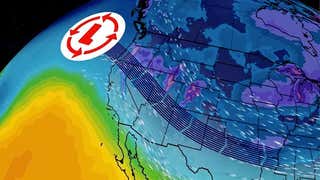

US
°C





Unusual June heat in the California combined with low tides to cause a mass die-off of California mussels. It was the worst die off in at least 15 years in Bodega Head, California, according to researchers. The mussels, completely exposed to the heat, baked in their shells.
Unusually warm temperatures combined with seasonal low tides to roast California mussels in their shells in an mass die-off that could have larger implications on the local marine ecosystem.
The die-off was first noticed and detailed by Jackie Sones, a research coordinator for UC Davis and the Bodega Marine Reserve, which includes Bodega Head – one of the sites where a die-off was reported – a point of land that juts into the Pacific Ocean 40 miles north of San Francisco.
A look at the die-off of mussels in Bodega Head, California.
(Jackie Sones, UC Davis)
Sones detailed the mortality event , including pictures that showed row a seemingly endless clump of mussel shells open and empty as if gasping for cool air, the brilliant blue on the inside of their shells a sign of life lost.
"We think this is the most significant mussel mortality we've seen on Bodega Head during the last 15 years (in terms of number of individuals and the amount of area impacted)," Sones said in one of the posts.
Average high temperatures in the area during that time in June should've been in the 60s, but it's clear that wasn't the case during this die-off. An extensive report on the die-off by Bay Nature said the temperature
Notably variable microclimates in California make that exact temperatures hard to confirm, but California was
of Bodega Bay hit 92 degrees on June 11, for instance. Temperatures soared to 100 degrees at San Francisco International airport on June 10, and downtown San Francisco, a two hour drive south of Bodega Head, experienced its hottest three-day stretch on record for meteorological summer.
Temperatures in the 70s alone aren't enough to kill the mussels. They don't start dying off until their internal temperatures hit the high 90s, in her blog.
But that can easily happen when it's low tide and the mussels are exposed to the sun. In September, , low tides .
That tide timing changes during June. from 11 am to 2 pm during the die-off period from June 9 to June 12, according to NOAA data. That means the mussels were completely exposed to the heat during one of the hottest times of the day.
Those factors led that the internal temperatures of the mussels killed could've easily topped 100 degrees.
The die-off at Bodega Head was the worst there since 2004, when a similar confluence of seasonal tides and temperatures spiked mussel temperatures to at least 97 degrees, .
As with most die-offs, the loss of the mussels could disrupt the larger food chain because of their vital role in the ecosystem as a whole.
“Mussels are known as a foundation species. The equivalent are the trees in a forest – they provide shelter and habitat for a lot of animals, so when you impact that core habitat it ripples throughout the rest of the system,”
Exactly how and what happens to the rest of the ecosystem remains to be seen.












